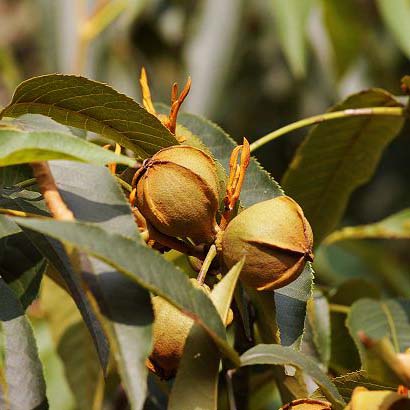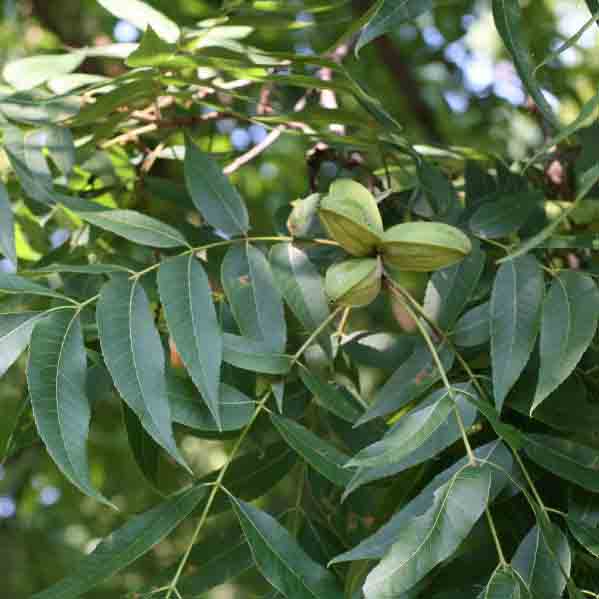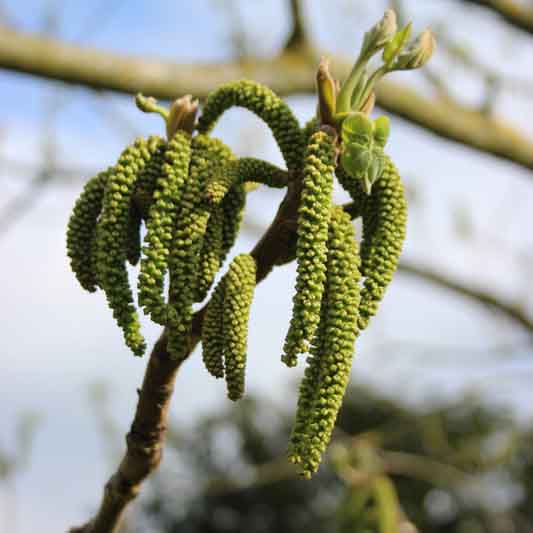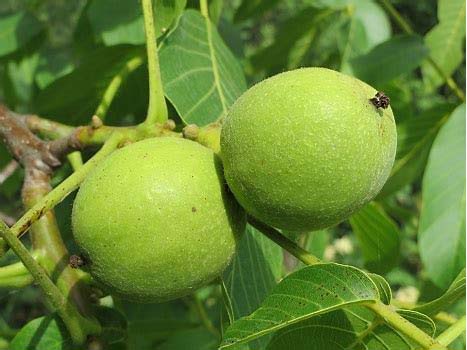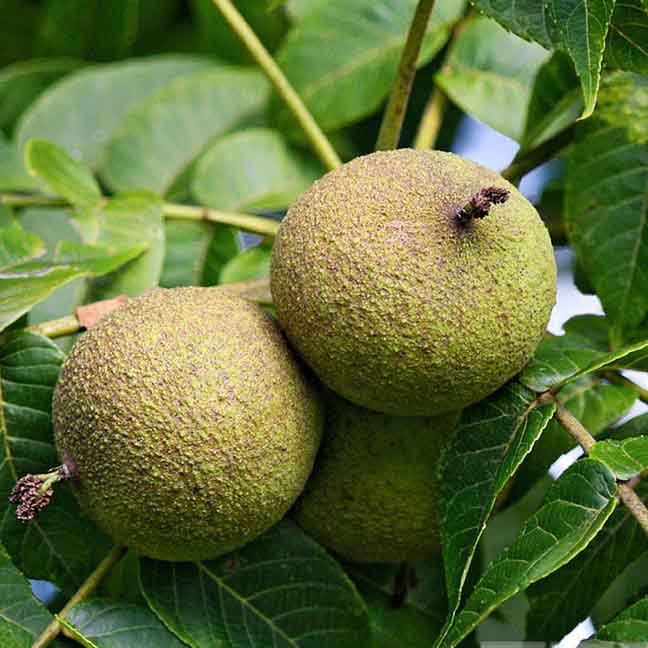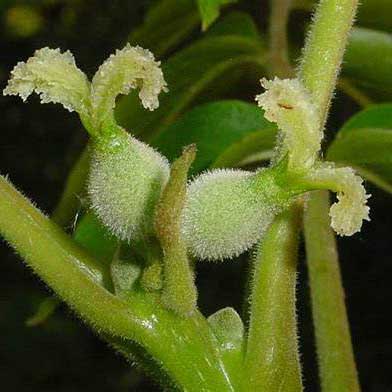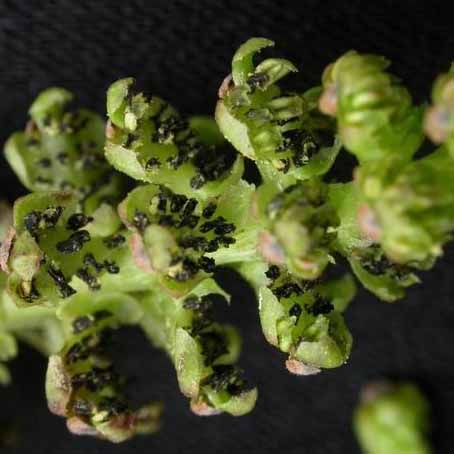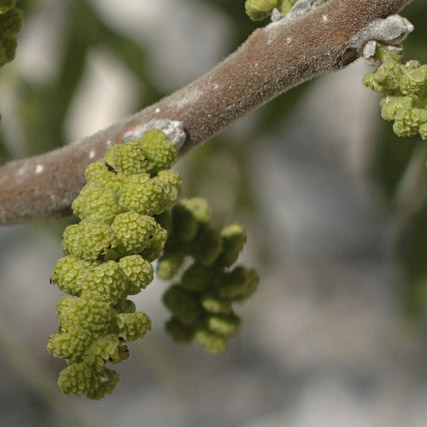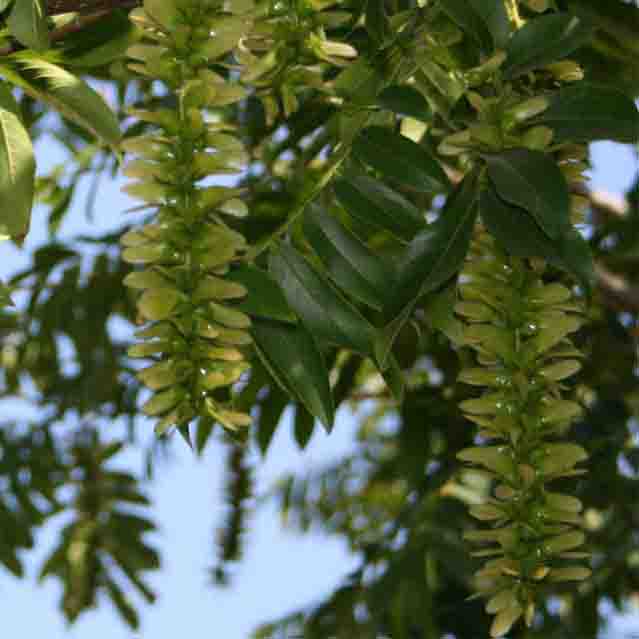Portal of Juglandaceae now is available ! Please read our document first.
Common name: Chinese hickory
Scientific name: Carya cathayensis
Chinese name: 临安山核桃
BLAST JBrowse Gene Search DownloadTaxonomy
Angiosperms / Eudicots / Fagales / Juglandaceae
Overview
Chinese hickory is a speciality of Hangzhou, Zhejiang Province, China, and has a history of more than 500 years since the Ming Dynasty. In Zhejiang and Anhui provinces of China, wild and domesticated Chinese pecans grow only in the moist valley at foothills of Tianmu Mountain, at an altitude of 500-1200 m.
Under this climatic condition, Chinese hickory received full sunlight in the sheltered position. However, unlike pecans, Chinese hickory has naked terminal buds and are therefore less adaptable for cold climates. Chinese hickory has smaller nuts with harder shells. It lacks tolerance to abiotic stresses such as heat, flooding, drought, and salinity that substantially limits its commercial planting in large scale.
Breeding of Chinese hickory is far behind pecan and plateaued at domestication levels until the past decade. However, this species has nucellar embryonic (apomixis), which are very valuable for inheriting disease resistance traits in production.
Genomic information
Common name: Pecan
Scientific name: Carya illinoinensis
Chinese name: 碧根果
BLAST JBrowse Gene Search DownloadTaxonomy
Angiosperms / Eudicots / Fagales / Juglandaceae
Overview
Pecan is a thin-shelled nut, also known as American pecan or long pecan. It originated from the United States and Mexico. Nowadays, pecan is distributed in more than 20 countries and regions on five continents, including the United States, Canada, Mexico, Brazil, Argentina, Peru, Italy, France, Australia, Egypt, South Africa, Israel, Japan, China and other places.
Pecan is not only a world-famous commercial nut tree species but also a timber and garden tree species. Besides of the thin-shelled nut characteristics, pecan nut is crispy, delicious, and rich in nutrition.
Pecan has been introduced into China for more than 100 years. The provinces, cities (districts) introduced and cultivated in China are mainly in the Eastern Subtropical region and the Yangtze River with the scattered distribution.
Genomic information
Common name: Chinese walnut
Scientific name: Juglans cathayensis
Chinese name: 野核桃
BLAST JBrowse Gene Search DownloadTaxonomy
Angiosperms / Eudicots / Fagales / Juglandaceae
Overview
Wild walnut (scientific name Juglans cathayensis Dode), also known as Chinese walnut, is a deciduous or small tree. The main difference from other species of this genus is that the leaflets grow into densely pubescent and star-shaped hairs below, and its inflorescences are long and drooping.
Wild walnuts grow in warm areas and mixed forests at 800-2000 (2800) meters above sea level. Trees are less resistant to cold and are not heat and humidity resistant. It prefers sunny surroundings. Wild walnuts have higher requirements for soil fertility and are not tolerant to barrenness. Wild walnut trees prefer fertile, moist, well-drained slightly acidic soils to somewhat alkaline soils.
Wild walnut seeds can be eaten, made into soap and used as a lubricant. Wood, bark and peel of wild walnuts have many commercial usages. Its bark and peel contain tannins, which are used as raw materials in the tannin industry. Its thick skin is used to make activated carbon. Its bark fibers can be used as raw materials in the fiber industry.
Genomic information
Common name: Black walnut
Scientific name: Juglans hindsii
Chinese name: 加州胡桃
BLAST JBrowse Gene Search DownloadTaxonomy
Angiosperms / Eudicots / Fagales / Juglandaceae
Overview
Juglans hindsii is commonly known as Northern California walnut and Hinds black walnut, a walnut tree endemic to Northern California. It is often referred to as the claro walnut in the wood industry, as it is a rhizome of English walnut orchard logs, which has caused some confusion.
Genomic information
Common name: Eastern black walnut
Scientific name: Juglans nigra
Chinese name: 黑胡桃
BLAST JBrowse Gene Search DownloadTaxonomy
Angiosperms / Eudicots / Fagales / Juglandaceae
Overview
Eastern Black Walnut (Juglans nigra) is a deciduous tree in the walnut family. It is native to eastern North America.
Black walnut is a commercially important tree due to its dark brown and easy to process wood characteristic. They are also grown for their unique and desirable flavors of fruit. The trees are cultivated for both timbers and walnuts consumption. Today, many varieties have been breed to improve the quality of nuts or wood.
The wood of black walnut is recognized as the top grade hardwood in the Western world. The wood is characterized by its gorgeous texture, dark color, excellent stability and medium density.
Genomic information
Common name: Persian walnut
Scientific name: Juglans regia
Chinese name: 胡桃
BLAST JBrowse Gene Search DownloadTaxonomy
Angiosperms / Eudicots / Fagales / Juglandaceae
Overview
English walnut (Juglans regia L.) commonly known as walnut; they belong to arbor trees and can grow up to 20-25 meters high.
The species widely distributes in Central Asia, West Asia, South Asia, and Europe. It usually grows on hillsides and hills at 400-1800 meters above sea level. In China, walnut often planted in lowlands and hilly areas.
Walnut seed kernels have a high oil content and can be eaten raw or squeezed for oil. In addition to edible nuts, walnut wood is a high-quality hardwood material for the woodworking industry.
Along with almonds, cashews, and hazelnuts, walnut has been named the world's four enormous commercial nuts.
Genomic information
Common name: Iron walnut
Scientific name: Juglans sigillata
Chinese name: 泡核桃
BLAST JBrowse Gene Search DownloadTaxonomy
Angiosperms / Eudicots / Fagales / Juglandaceae
Overview
Juglans sigillata, also known as iron walnut, is a type of walnut tree. This tree is cultivated for nuts. The nuts are oval with humps and ridges. The trees are also used for wood. Iron walnuts are commonly found in Yunnan as well as in Guizhou, Sichuan, and Tibet. It is sometimes planted in gardens and cultivated as ornamental plants.
Genomic information
Common name: Little walnut
Scientific name: Juglans microcarpa
Chinese name: 小果黑核桃
BLAST JBrowse Gene Search DownloadTaxonomy
Angiosperms / Eudicots / Fagales / Juglandaceae
Overview
Juglans microcarpa, known also as the little walnut, Texas walnut, Texas black walnut or little black walnut (as it belongs to the "black walnuts" section Juglans sect. Rhysocaryon). It is a large shrub or small tree (10–30 ft tall) which grows wild along streams and ravines in Texas, New Mexico, Oklahoma, and Kansas.
Two varieties are recognized: J. microcarpa var. microcarpa and J. microcarpa var. stewartii.
Genomic information
Common name: Chinese wingnut
Scientific name: Pterocarya stenoptera
Chinese name: 枫杨
BLAST JBrowse Gene Search DownloadTaxonomy
Angiosperms / Eudicots / Fagales / Juglandaceae
Overview
Maple poplar (Pterocarya stenoptera C. DC) is also known as Chinese wingnut. Maple poplar is a deciduous tree that can grow up to 30 meters in height and up to 1 meter in diameter at chest height. Its broad canopy, dense foliage, and rapid growth. The tree is usually planted as shade trees and protective trees.
Its bark has many usages such as painkillers and insecticides. Its wood is not only strong but light and soft. Therefore, it is widely used in furniture and match production. Its leaves are poisonous and can be used as pesticides. It can also be used as a rootstock for walnut (Juglans regia) grafting.
Its bark and branches contain tannins, which can be used as raw materials for tannins and the fiber industry. Its fruit can be used as feed and to make wine, and the seeds can be pressed for oil.
